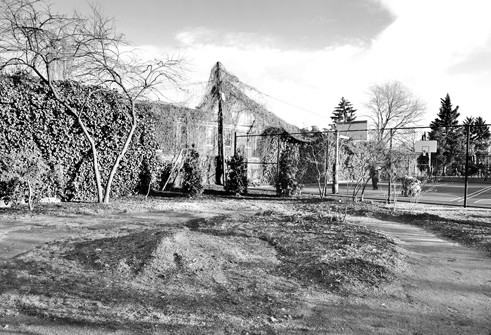Dying Maple Removed in Volta Park

By Alix PianinCurrent Staff Writer
Some Georgetown residents near Volta Park are expressing surprise at the recent loss of a maple tree that had stood at the park for more than half a century, but several community leaders say the tree was unhealthy and hazardous.
Members of the Georgetown Garden Club and Friends of Volta Park said the tree’s removal had been in the works for a long time. The tree had already lost significant limbs, said Barbara Downs, a member of the Georgetown Garden Club’s civic committee. The groups also questioned the stability of the tree, which was located near a playground, basketball court and recreation center.
While the city had pruned the Norway maple, falling hardwood limbs could prove dangerous, Downs said. Once it was removed last Thursday, city arborists confirmed the tree had been rotting from its core.
The grounds of Volta Park, located between Q Street and Volta Place, and 33rd and 34th streets, are maintained by the Georgetown Garden Club through a partnership with the D.C. Department of Parks and Recreation and a grant from the Garden Club of America. The Georgetown Garden Club has used the grant to grow a garden of native plants, and to create both shady and sunny areas in the park.
Concerned about the health of the maple, the Garden Club went to the Urban Forestry Administration, which operates under the D.C. Department of Transportation. An arborist declared the tree sick, and the agency contacted the Care of Trees company, which removed the tree last week.
The Norway maple is considered an invasive tree species, and many were planted in the District in the mid-20th century as street trees, according to Downs.
The U.S. Forest Service no longer recommends planting Norway maples; the agency says they crowd out and displace native species and create shade so dense it threatens other plants and flowers.
The Garden Club plans to replace the maple with a black gum tree, which Downs said has “beautiful foliage” and is native to the eastern United States.
The Georgetown Garden Club, in consultation with Friends of Volta Park and D.C. urban forestry group Casey Trees, has also planted swamp, pin and willow oaks in the park over the past several years, and the club plans to plant two additional yellow wood trees.
But Doug McFadden, who lives near the park on the 1500 block of 33rd Street, said he was perturbed by the lack of notice to nearby residents about the work done at Volta.
“I was rather shocked by it,” said McFadden, who was unaware the tree was unhealthy or that there were any plans to bring it down.
“One of the problems we have as neighbors is we’re never informed of what’s taking place in the park,” he said. “There has to be more communication with the residents around the park about what’s going on.”
McFadden was also concerned about the possible impact of removing the tree on the park’s ecosystem. “You can’t just take for granted changes in chopping down nature. We have an obligation to be conservators,” he said. “There was a family of squirrels living in it — they’re homeless now.”
Downs said the Georgetown Garden Club went through all the proper channels during the process, and had been primarily concerned with the safety of the community.
“No one likes to cut a tree down for no reason, but that’s not what happened here,” said Mimsy Lindner, who until recently was president of the Friends group. “It wasn’t just a haphazard decision.”
This article appears in the Feb. 13 issue of The Georgetown Current newspaper.
